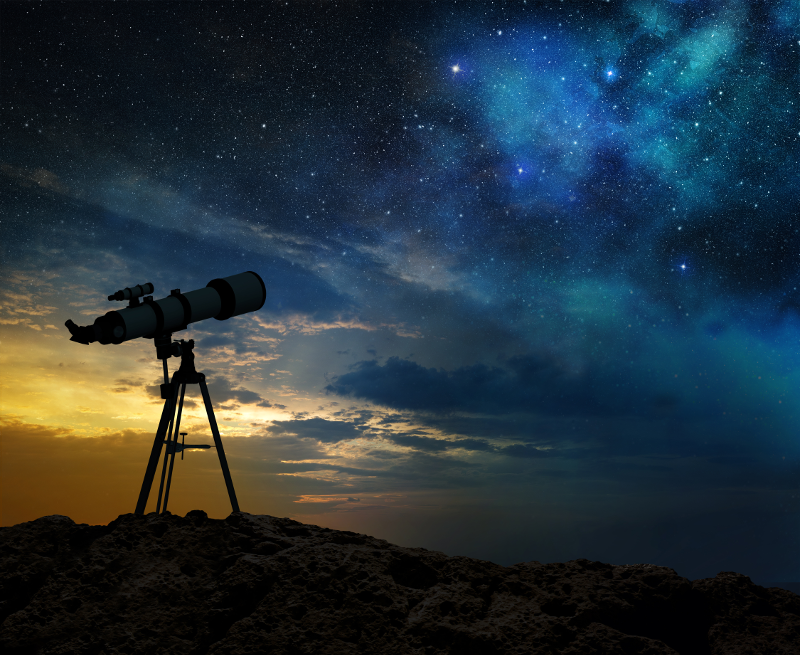
A telescope will not operate without an eyepiece. The eyepiece allows light to be focused so that you’ll be able to see a sharp view of the object or area that you’re trying to study. When you install an eyepiece, you’ll be able to bring distant objects closer to you so that you can study them as if you were right there in front of them. It’s a modern, technological sort of sorcery that boggles the mind as much as it does the eye.
In this post, we’re going to look at what goes into selecting the right telescope eyepiece for you.
Focal Length, Magnification
Focal length is one of the most important attributes of a telescope eyepiece. This amount of the telescope, as well as the amount of the eyepiece, is going to determine the magnification level.
The first step in figuring this out is to discover what magnification you want for the eyepiece as well as the magnification you want for the telescope. Since both of these lengths are expressed in millimeters, you would find the total magnification by adding together the two lengths of the eyepiece and the telescope.
So for example, a 25mm length on an eyepiece is always going to yield more magnification than one that has a 50mm length. This is important to realize: the lower the number of the length, the greater the magnification will be.
You will have the choice of a small, sharp, and bright image at lower magnification, or a large, blurry, and dim image at higher magnification. The reason for this is that there is only so much light that an eyepiece can take in, and any more than that isn’t going to make the image more clear, but instead more dim and blurry. This is what is known as empty magnification.
Eye Relief, Corrective Lenses
The overall design of an eyepiece is what determines the eye relief, which is the distance between the lens and your eye when the image is in focus. If you wear corrective lenses, you’re going to need a length of at least 15mm in order to see the whole field of view comfortably.
Types of Eyepiece: Barrel Size
Most eyepieces will come in two separate diameters: 1.25″ and 2″. A smaller barrel size can be found in cheaper, department store eyepieces, and this should be avoided at all costs. The majority of amateur telescopes will accommodate the smaller, 1.25″ eyepiece, while larger aperture telescopes with a focuser of the same diameter will support the 2″ eyepiece.
Illuminated Reticle Eyepieces
This type of eyepiece has an etched crosshair or other type of grid pattern that can be illuminated in the dark. This provides a great opportunity to precisely lock on to an astronomical anomaly, and provide a precise look at the feature. Now since this type of eyepiece does have a grid or lock-on image built into it, it’s not advised to use this type of eyepiece for regular observation. What you can do, though, is to lock on to an object with this illuminated reticle eyepiece and then replace the eyepiece with an ordinary eyepiece to look at it normally.
Types of Eyepieces for Beginners
Kellner, Erfle, and Nagler are all good choices for beginners who are just starting out with telescopy. These variants are at an affordable price and can give you truly spectacular images. Kellner, Erfle, and Nagler all offer up a good value for their prices, and you get what you pay for with these lenses.
Eyepieces of a certain level of quality can be gotten for the right price once you know what you’re looking for. You need to get the focal length down and figure out what exactly it is that you’re looking for from a lens. High power viewing of the moon and planets is going to entail getting an eyepiece of a shorter length by default, which can be tricky when you take into account the shorter eye relief.
A telescope will not operate without an eyepiece. The eyepiece allows light to be focused so that you’ll be able to see a sharp view of the object or area that you’re trying to study. When you install an eyepiece, you’ll be able to bring distant objects closer to you so that you can study them as if you were right there in front of them. It’s a modern, technological sort of sorcery that boggles the mind as much as it does the eye.
While this list isn’t exhaustive, it should begin to give you an insight into the inner workings of telescope eyepieces as well as what you need to look for in a beginner eyepiece. We hope you use this information to make an informed decision.
